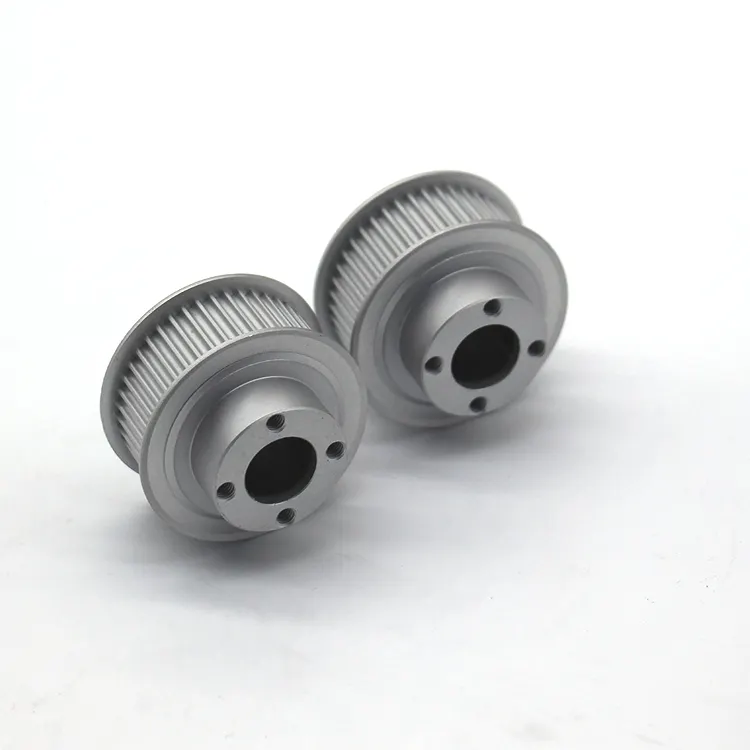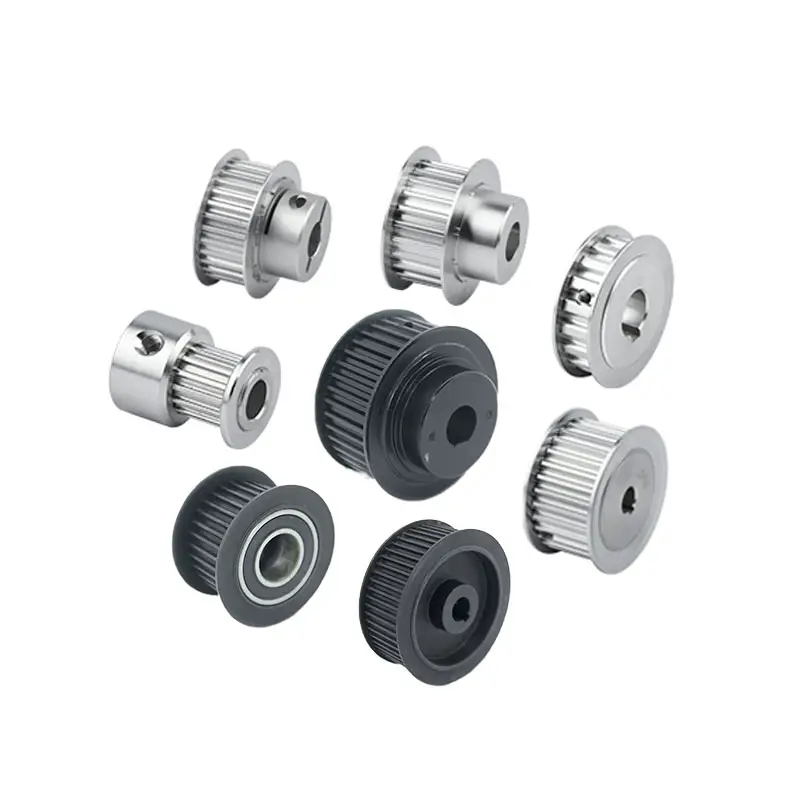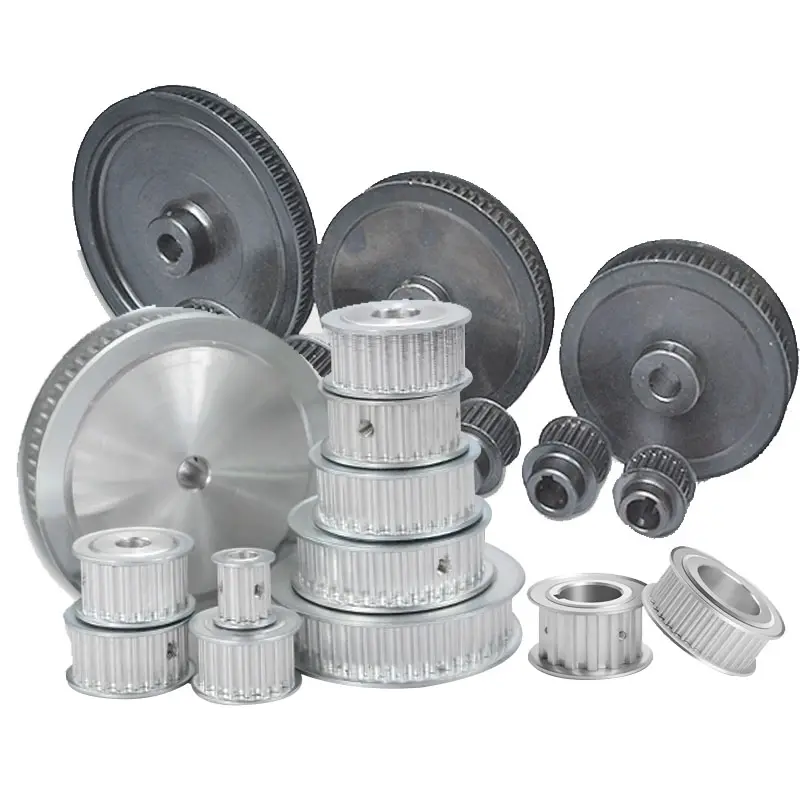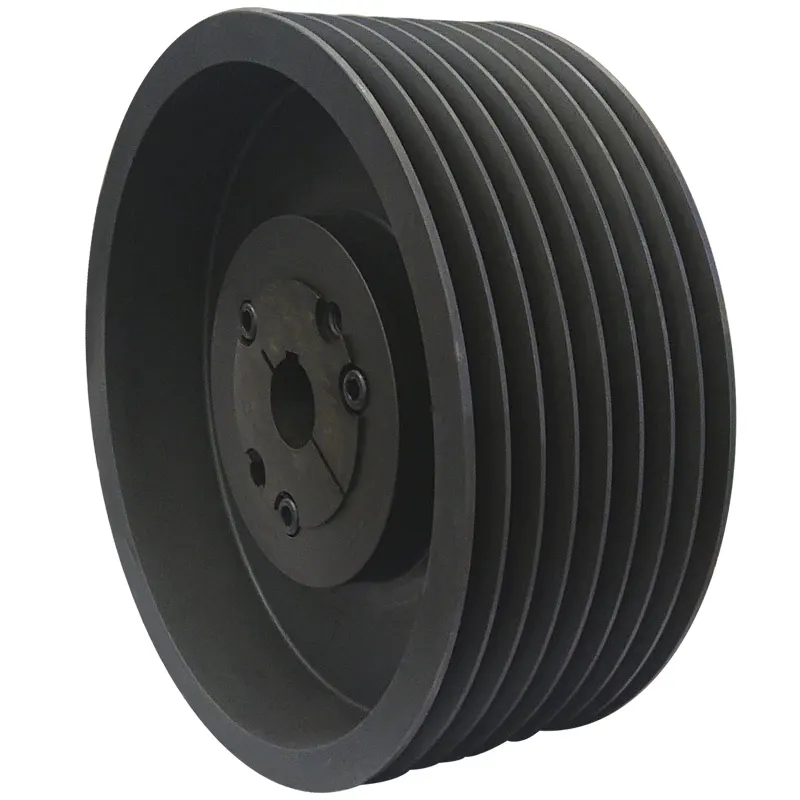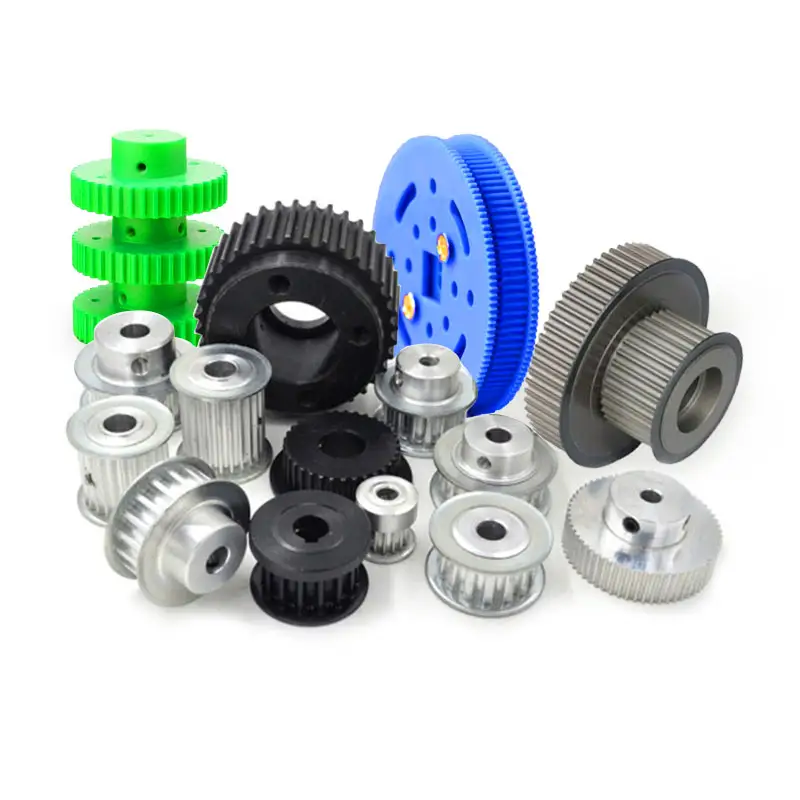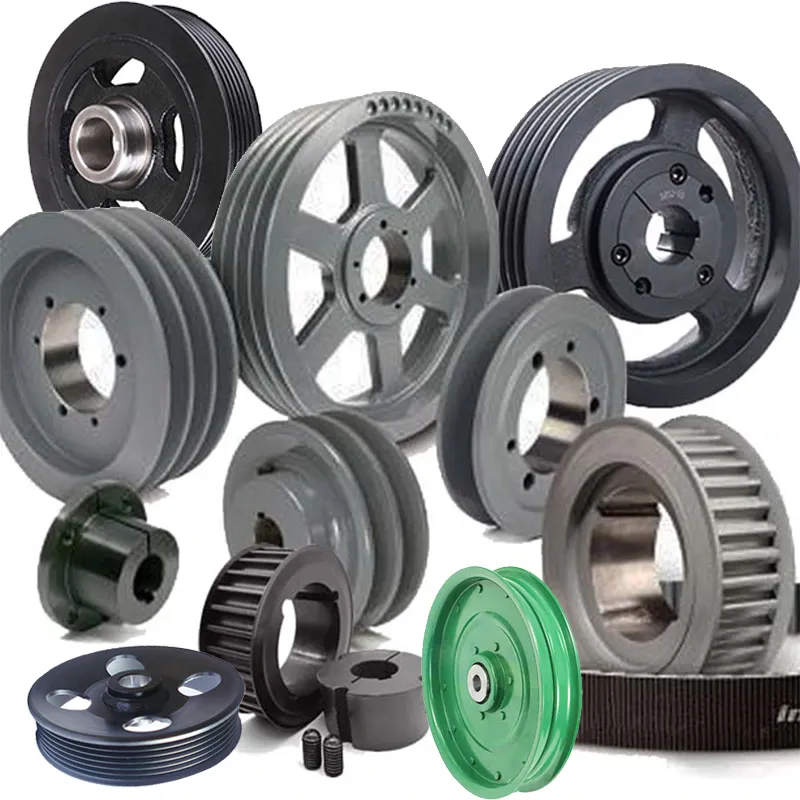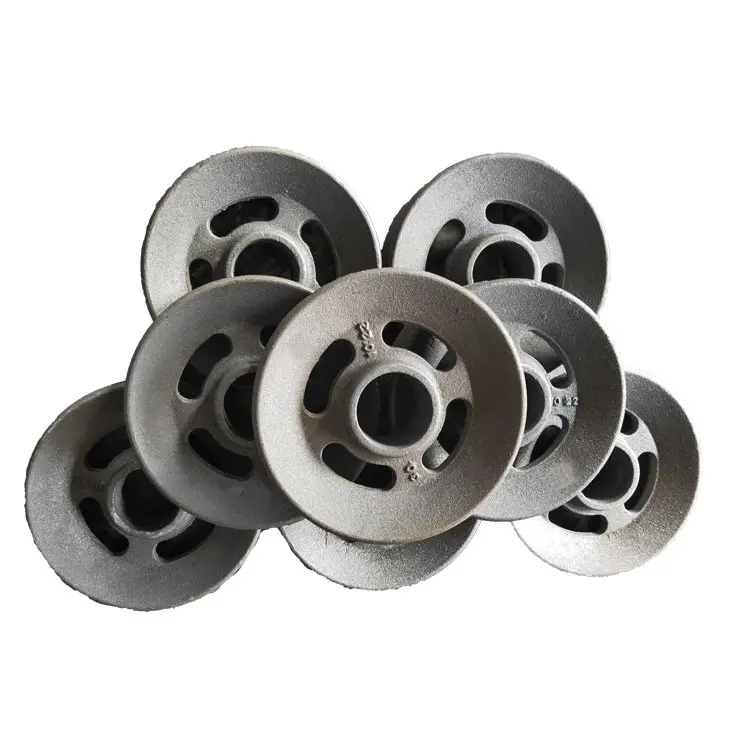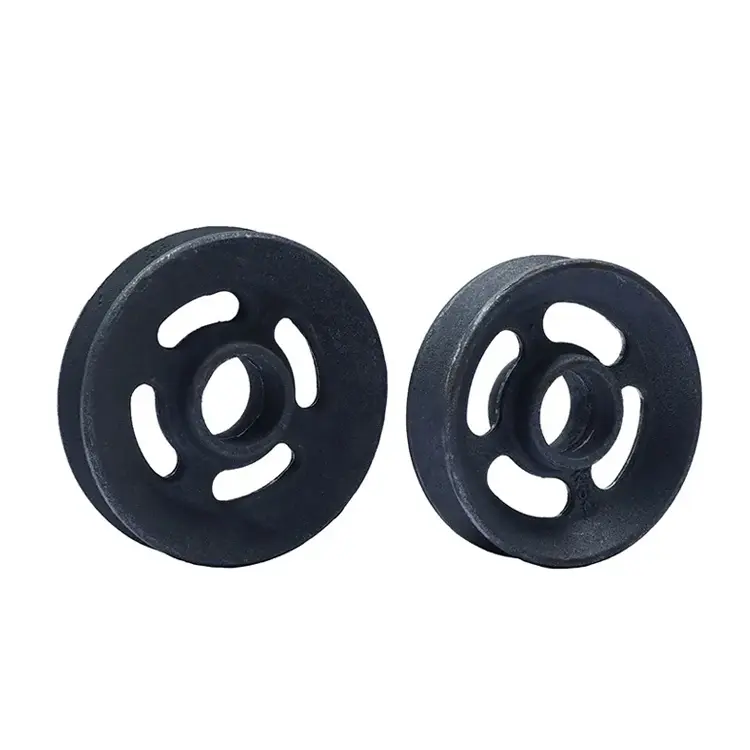Product Description
SPA CHINAMFG Spc Spz Heavy Duty Cast Iron Aluminum V Belt Wheel Pulley Bearing Steel V Groove Wheels Sheave Pulley
SPA CHINAMFG SPC SPZ Heavy Duty V Pulley ,V pulley, V belt pulley, V groove pulley, V groove belt pulley, taper lock pulley, taper lock V belt pulley, taper lock bushing pulley, taper lock pulleys / taper bore pulley, large V belt pulley, double V belt pulley, cast iron V belt pulley belt pulley, variable speed V belt pulleys, V belt pulley split pulley, cast iron V belt pulley
V belt pulley specifications:
1) European standard:
A) V-belt pulleys for taper bushings: SPZ, SPA, SPB, SPC; Up to 10 grooves
B) Adjustable speed V-belt pulleys and variable speed pulleys
C) Flat belt pulleys and conveyor belt pulleys
2) American standard:
A) Sheaves for taper bushings: 3V, 5V, 8V
B) Sheaves for QD bushings: 3V, 5V, 8V
C) Sheaves for split taper bushings: 3V, 5V, 8V
D) Sheaves for 3L, 4L or A, and 5L or B belts: AK, AKH, 2AK, 2AKH, BK, BKH, 2BK, 2BKH, 3BK
E) Adjustable sheaves: Poly V-pulley, multi-pitch H, L, J, K and M
3) Bore: Pilot bore, finished bore, taper bore, bore for QD bushing
4) Surface finish: Paint, phosphating, zinc plated
5) Material: Cast iron, ductile iron, nylon, aluminum
6) Made according to drawings and/or samples, OEM inquiries welcomed
|
|
Specification: |
| 1 | Made of superior cast iron; Pulley type: V Pulley; |
| 2 | Good hardness and strength. Anticorrosive capability; |
| 3 | SPA, SPB, SPC, SPZ, AK, AKH, 2AK, 2AKH, BK, BKH,2BK, 2BKH, 3BK and non-standard series; |
| 4 | All the products would be done by precise machining and power painting to get smooth surface; |
| 5 | Every product would be tested repeatedly and carefully before the shipment; |
| 6 | Safe package to protect products during the shipment; |
| Advantages: | |
| 1 | The strong technology group as well as the advanced equipment; |
| 2 | More than 20 years experience; |
| 3 | The Products have got good comments in the world market; |
| 4 | OEM service and special design service be accepted; |
| 5 | ISO9001-2000 Certified. |
HangZhou CHINAMFG Industry Co., Ltd. is a specialized supplier of a full range of chains, sprockets, gears, gear racks, v belt pulley, timing pulley, V-belts, couplings, machined parts and so on.
Due to our CHINAMFG in offering best service to our clients, understanding of your needs and overriding sense of responsibility toward filling ordering requirements, we have obtained the trust of buyers worldwide. Having accumulated precious experience in cooperating with foreign customers, our products are selling well in the American, European, South American and Asian markets.Our products are manufactured by modern computerized machinery and equipment. Meanwhile, our products are manufactured according to high quality standards, and complying with the international advanced standard criteria.
With many years’ experience in this line, we will be trusted by our advantages in competitive price, one-time delivery, prompt response, on-hand engineering support and good after-sales services.
Additionally, all our production procedures are in compliance with ISO9001 standards. We also can design and make non-standard products to meet customers’ special requirements. Quality and credit are the bases that make a corporation alive. We will provide best services and high quality products with all sincerity. If you need any information or samples, please contact us and you will have our soon reply.
/* January 22, 2571 19:08:37 */!function(){function s(e,r){var a,o={};try{e&&e.split(“,”).forEach(function(e,t){e&&(a=e.match(/(.*?):(.*)$/))&&1
| Material: | Cast Iron |
|---|---|
| Application: | Industry |
| Module: | SPA Spb Spc Spz Heavy Duty V Pulley |
| Groove: | 1-10 |
| Surface: | Black |
| Process: | Machined, Forged |
| Customization: |
Available
| Customized Request |
|---|
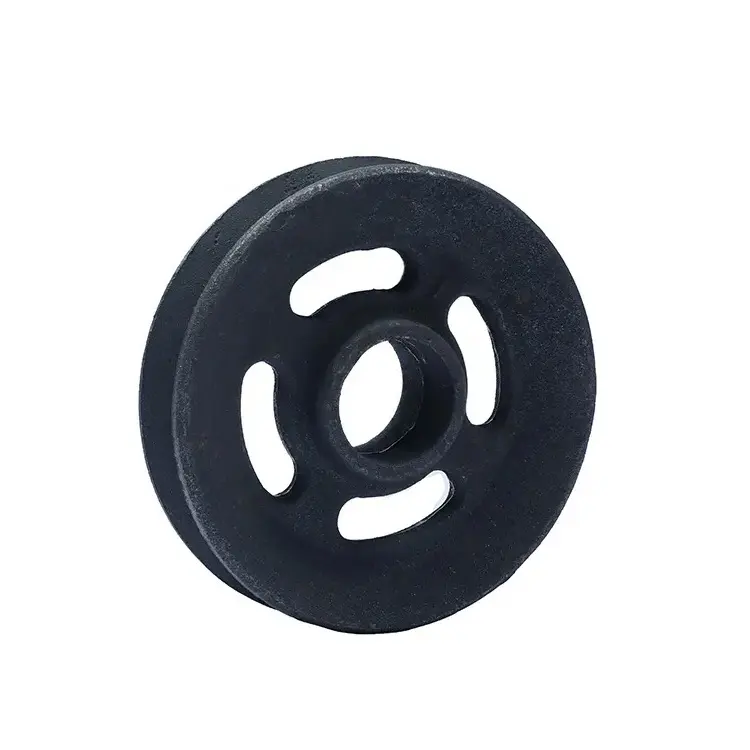
How are sheave pulleys used in the operation of cranes and hoists?
Sheave pulleys play a vital role in the operation of cranes and hoists, enabling the lifting and movement of heavy loads. Here is a detailed explanation of how sheave pulleys are used in the operation of cranes and hoists:
In cranes and hoists, sheave pulleys are typically incorporated into the lifting mechanism, often in combination with cables or ropes. The integration of sheave pulleys involves the following steps:
1. Lifting Mechanism Design: The lifting mechanism of a crane or hoist is designed based on the specific requirements of the lifting operation. Factors such as load capacity, lifting height, and application type are taken into consideration.
2. Wire Rope Selection: The appropriate wire rope or cable is selected based on the load capacity and other relevant factors. The wire rope is chosen to have suitable properties such as strength, flexibility, and resistance to wear or corrosion.
3. Sheave Pulley Configuration: Sheave pulleys are configured and positioned within the lifting mechanism to guide and support the wire rope. The pulleys are mounted on a framework or structure that allows them to rotate freely.
4. Multiple Pulley Systems: Cranes and hoists often utilize multiple sheave pulleys arranged in various configurations to achieve mechanical advantage and increase lifting capacity. These configurations include single sheave, double sheave, and multiple sheave arrangements.
5. Wire Rope Routing: The wire rope is threaded through the grooves of the sheave pulleys, creating a continuous loop. The pulleys guide the wire rope along the intended path, ensuring proper alignment and minimizing friction.
6. Drive Mechanism: A drive mechanism, such as an electric motor or hydraulic system, provides the power necessary to rotate the sheave pulleys. The rotation of the pulleys causes the wire rope to move, lifting or lowering the load.
7. Lifting and Lowering: When the crane or hoist is operated, the sheave pulleys rotate, causing the wire rope to move. As the wire rope is wound or unwound from the pulleys, the load is lifted or lowered accordingly. The mechanical advantage provided by the multiple pulley systems allows for efficient lifting and precise control.
8. Load Control and Safety: Cranes and hoists incorporate various control mechanisms, such as brakes and limit switches, to ensure safe and controlled lifting operations. These mechanisms work in conjunction with the sheave pulleys and other components to prevent overloading, uncontrolled descent, or other hazardous situations.
Regular maintenance and inspection of the sheave pulleys, wire rope, and other lifting components are essential to ensure the continued safe and reliable operation of cranes and hoists. This includes lubrication of the pulleys, checking for signs of wear or damage, and making necessary adjustments or replacements to maintain optimal functionality.
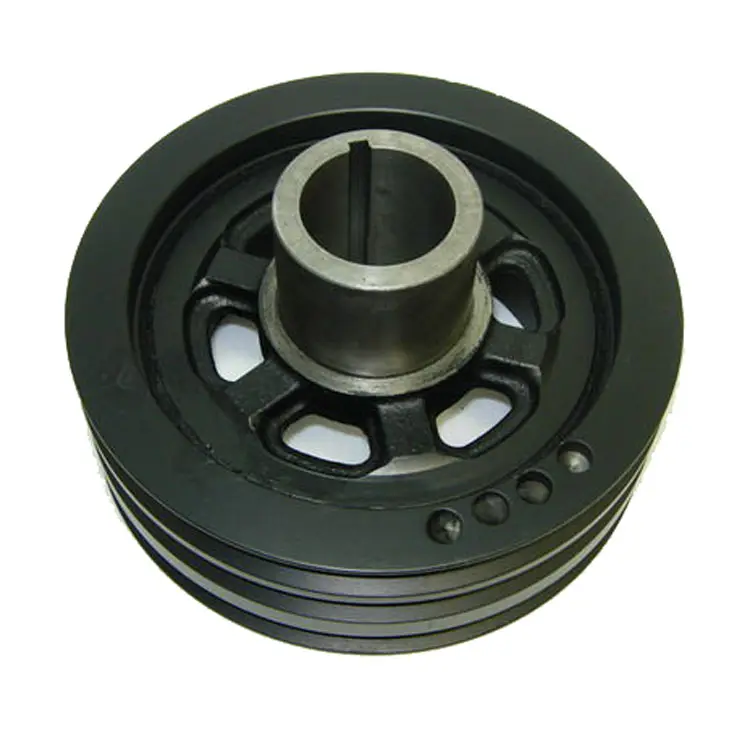
How does the size and design of a sheave pulley impact its performance?
The size and design of a sheave pulley have a significant impact on its performance in various applications. Here is a detailed explanation of how the size and design of a sheave pulley affect its performance:
1. Mechanical Advantage: The size of a sheave pulley directly affects the mechanical advantage it provides. A larger diameter sheave pulley offers a greater mechanical advantage, allowing for higher torque or force amplification. This is particularly important in applications where heavy loads need to be lifted or moved. Conversely, a smaller diameter sheave pulley provides a lower mechanical advantage but allows for higher rotational speed. The selection of the appropriate sheave pulley size is crucial to achieving the desired balance between torque and speed in the system.
2. Speed and Torque Ratio: The size ratio between the driving and driven sheave pulleys determines the speed and torque ratio in belt and chain drive systems. By varying the diameter of the sheave pulleys, the rotational speed of the driven component can be adjusted relative to the driving component. A larger driven sheave pulley compared to the driving sheave pulley results in higher torque but lower speed, while a smaller driven sheave pulley leads to higher speed but lower torque. The proper sizing and design of the sheave pulleys are critical in achieving the desired speed and torque characteristics of the system.
3. Belt or Chain Compatibility: The design of a sheave pulley should be compatible with the type and size of the belt or chain being used. The grooves and profile of the sheave pulley should match the corresponding belt or chain, ensuring proper engagement and minimizing slippage. A well-designed sheave pulley provides sufficient grip on the belt or chain, maximizing power transmission efficiency and preventing premature wear or failure of the system.
4. Material Selection: The design of a sheave pulley also includes the choice of materials. The material selection depends on factors such as the load-bearing capacity, environmental conditions, and desired friction characteristics. Common materials for sheave pulleys include steel, cast iron, aluminum, and various polymers. The material should possess the necessary strength, durability, and resistance to wear, corrosion, or temperature variations, ensuring reliable performance and longevity of the sheave pulley.
5. Groove Configuration: The design of the grooves in a sheave pulley is crucial for proper cable or belt tracking. The groove configuration should match the shape and size of the cable or belt to ensure effective engagement and prevent slipping or misalignment. Different groove profiles, such as V-shaped, U-shaped, or flat, are used depending on the application requirements. The correct groove design promotes efficient power transmission, reduces wear on the cables or belts, and minimizes noise and vibration.
6. Bearing and Lubrication: The design of a sheave pulley should consider the bearing arrangement and lubrication requirements. Proper bearing selection and lubrication ensure smooth rotation and reduce frictional losses. The design should allow for easy access to the bearing for maintenance and replacement. Additionally, provisions for lubrication, such as grease fittings or oiling points, should be incorporated to ensure optimal performance and longevity of the sheave pulley.
7. Load Capacity: The size and design of a sheave pulley determine its load-bearing capacity. A well-designed sheave pulley can handle the anticipated loads without deformation or failure. The material strength, groove profile, and overall structural integrity of the sheave pulley should be carefully considered to ensure safe and reliable operation under the expected loads.
Overall, the size and design of a sheave pulley directly impact its performance. Factors such as mechanical advantage, speed and torque ratio, belt or chain compatibility, material selection, groove configuration, bearing and lubrication requirements, and load capacity must be carefully considered in the design process to achieve optimal performance, efficiency, and reliability in various applications.
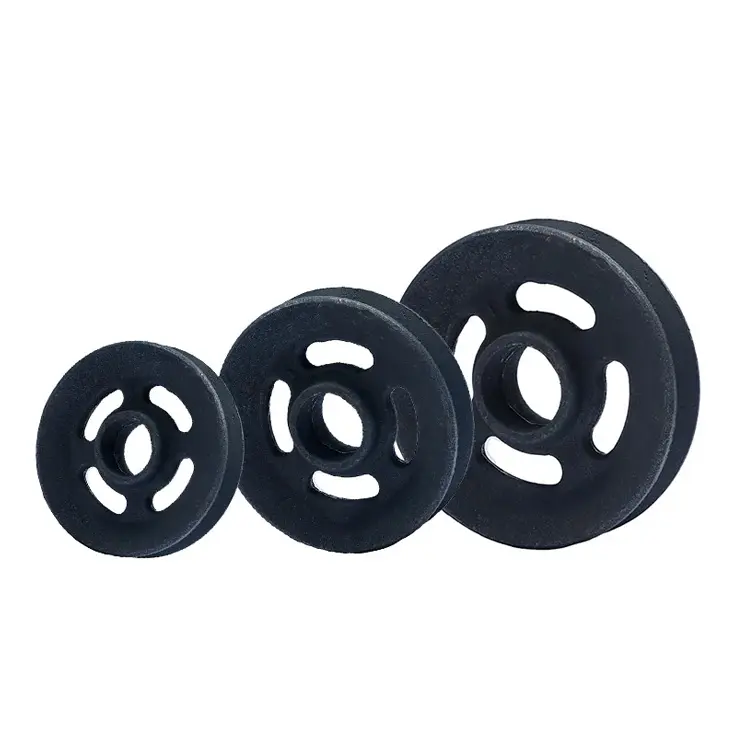
How do sheave pulleys function in lifting and cable-based systems?
In lifting and cable-based systems, sheave pulleys play a crucial role in facilitating smooth and efficient operation. Here is a detailed explanation of how sheave pulleys function in such systems:
Sheave pulleys are specifically designed to guide and support cables, ropes, or belts in lifting and cable-based systems. They provide a means to change the direction of force applied to the cable and enable the transmission of force between different parts of the system. Here are the key functions of sheave pulleys in lifting and cable-based systems:
- Change of Direction: Sheave pulleys enable a change of direction for the cable or rope in lifting systems. By redirecting the path of the cable, the force applied by the lifting mechanism can be directed vertically, horizontally, or at any desired angle. This change of direction allows for versatile positioning and maneuverability in lifting operations, accommodating different spatial requirements.
- Mechanical Advantage: Sheave pulleys provide a mechanical advantage in lifting systems. By incorporating multiple sheave pulleys in a block and tackle configuration, the lifting force applied by the operator can be multiplied. A block and tackle system consists of multiple pulleys arranged in tandem, with the cable passing through them. This arrangement increases the effective force applied to the load while reducing the force required by the operator, making it possible to lift heavier loads with less effort.
- Load Distribution: Sheave pulleys help distribute the load evenly across the cable or rope in lifting systems. As the cable passes through the groove(s) of the pulley, the load is shared among multiple strands or lines. This load distribution prevents excessive stress on any single part of the cable, ensuring its durability and minimizing the risk of failure. By evenly distributing the load, sheave pulleys contribute to the safe and efficient operation of lifting systems.
- Cable Management: Sheave pulleys assist in cable management in lifting systems. They prevent tangling, twisting, or knotting of the cable, ensuring smooth and unobstructed movement during lifting operations. The groove(s) on the pulley’s outer circumference guide and align the cable, maintaining proper tension and preventing entanglement. Effective cable management provided by sheave pulleys enhances the reliability and longevity of the lifting system.
- Speed Control: Sheave pulleys help control the speed of lifting operations. By adjusting the position of the cable on the pulley, operators can regulate the rate at which the load is lifted or lowered. This speed control feature is particularly important when precise positioning or delicate handling is required. By allowing for controlled and gradual movements, sheave pulleys enhance the operator’s ability to perform lifting tasks safely and accurately.
- Increased Reach: Sheave pulleys contribute to increasing the reach of lifting systems. By incorporating multiple pulleys and extending the cable length, sheave pulleys enable the lifting mechanism to access objects or loads that are located at a distance. The extended reach provided by sheave pulleys enhances the versatility and flexibility of lifting systems, allowing them to be used in various applications and environments.
In summary, sheave pulleys are essential components in lifting and cable-based systems. They enable a change of direction, provide a mechanical advantage, distribute the load evenly, assist in cable management, offer speed control, and increase the reach of the lifting mechanism. By fulfilling these functions, sheave pulleys contribute to the smooth, efficient, and safe operation of lifting and cable-based systems in various industries and applications.


editor by CX
2024-04-23
